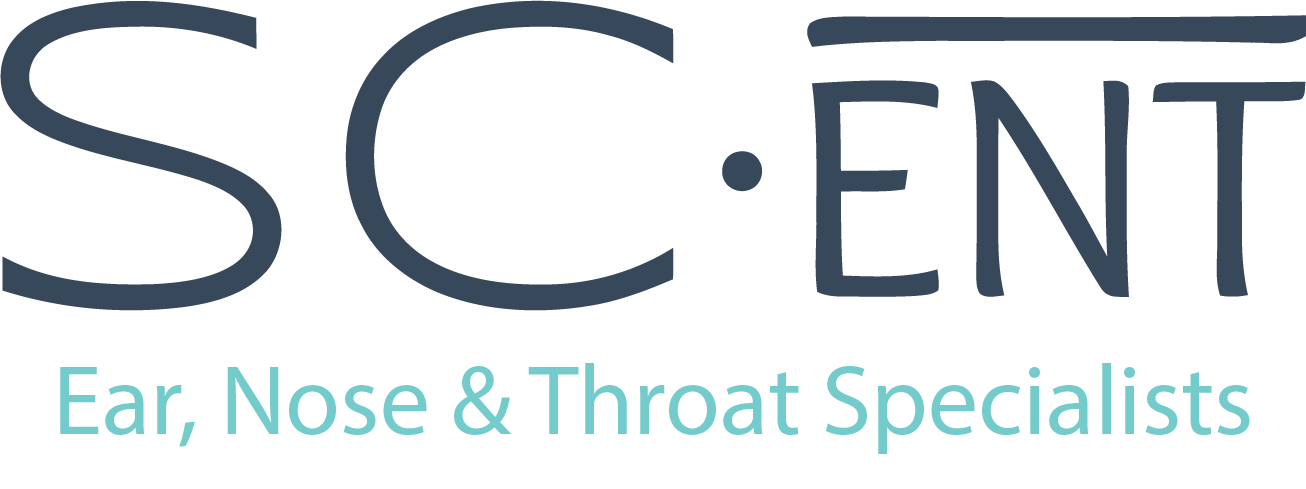According to the Centers for Disease Control and Prevention, 26.9 million people are diagnosed with sinusitis every year. Those are cases that are actually reported to the CDC. Health care experts estimate that the number is actually higher–37 million Americans diagnosed with sinusitis every year. Moreover, chronic sinusitis affects approximately 15% of the US population and is one of the most common chronic illnesses in America. As a result, chronic sinusitis accounts for over 10 percent of all primary care visits, and for more antibiotic prescriptions than nearly any other diagnosis.
The sinuses are air-filled structures within the facial skeleton, adjacent to the nasal cavity around the eyes and nose, which have a mucous-secreting lining. There are four paired sinuses, eight in total: frontal (above the eyes), ethmoid (between the eyes), maxillary (below the eyes), and sphenoid (all the way in the back). The bony cavities surrounding them are lined with soft tissue called mucosa.
The sinuses produce a large amount of mucus daily, and this mucus drains through small openings (ostia) into the nasal cavity where it is swept back into the nasopharynx and down into the throat (esophagus) where it is swallowed. Mucus is a fluid that cleans bacteria and other particles out of the air you breathe. Cilia (tiny hair cells) remove mucus from your sinuses so it can drain out through your nose.
The sinuses connect to the nose through small, narrow channels, and as long as these channels are open, the sinuses stay healthy allowing air from the nose to enter the sinuses and mucus made in the sinuses to drain into the nose.
Each of the sinuses has a unique drainage pattern, but the frontal, maxillary and part of the ethmoid (anterior ethmoids) sinuses all drain into a central region known as the middle meatus. Blockage or obstruction of this middle meatus area can lead to backup in these three sinuses and result in inflammation (sinusitis).
Sinusitis, also known as a sinus infection or rhinosinusitis, is an inflammation of the mucous-lined, air-filled spaces in your skull that connect to the nose and throat. When the sinuses become inflamed, blocked or swollen, normal mucus drainage may not occur trapping air and other fluids, creating vacuums and/or pressure. This pressure can cause pain, which can sometimes be intense. Clogged sinuses may also lead to infections.
Often during a cold sinusitis occurs when viruses or bacteria infect the sinuses and begin to multiply. The infection causes the sinus lining to swell, blocking the channels that drain the sinuses, causing mucus and pus to fill up the nose and sinus cavities. This buildup is a good place for bacteria to grow.
Allergies, nasal blockages (from growths such as polyps), nasal conditions (such as a deviated septum), changes in temperature or air pressure, and certain diseases can also cause acute and chronic sinusitis.
Quite often the symptoms of sinusitis and allergies overlap, but there are key differences in the things that trigger them.
Your nose and sinuses get stuffed up with both sinusitis and allergies, but it happens for different reasons. With allergies, the passages of your nose and sinuses swell because they are trying to flush out allergens like pollen, mold, dust mites and pet dander. With sinusitis, the passages of your nose and sinuses swell because of allergies or a cold. Sometimes symptoms develop from bacteria that cause an infection.
If you have allergies, you will have symptoms as soon as you are exposed to the allergen you are allergic to, and they will last as long as you are exposed to them. If you have sinusitis, symptoms usually happen after you have had a cold or allergies, but certain symptoms linger for an extended period of time even after your cold goes away.
There are several types of sinusitis, including
- Acute (lasts up to 4 weeks)
- Subacute (lasts 4 to 12 weeks)
- Chronic (lasts more than 12 weeks and can continue for months or even years)
- Recurrent (several attacks within 1 year)
Acute Sinusitis or Acute Rhino-Sinusitis (ARS) often starts as a cold, which then turns into a bacterial infection. Symptoms usually include discolored nasal drainage along with nasal obstruction, nasal congestion, facial pain and pressure, and/or facial fullness for up to 4 weeks. Other symptoms may include a cough, fever, fatigue, a headache, post-nasal drip, a reduced sense of smell and taste, dental pain and ear fullness.
Symptoms for Chronic Sinusitis or Chronic Rhino-Sinusitis (CRS) often include nasal obstruction (e.g., polyps), nasal congestion, facial pressure and fullness, thick discharge or discolored mucus, swelling (edema), and a reduced sense of smell and taste for over 12 weeks.
There are certain risk factors that increase your chances of getting sinusitis. These include:
- Having a cold
- Having allergies
- Overusing decongestant nasal sprays
- Smoking
- Swimming or Diving
During your consultation, your ENT doctor will review your medical history with you, and discuss your sinus-related symptoms, including duration and any association with seasons or other environmental exposures such as allergies or smoking. Your doctor will also ask you if you have tried any treatments in the past, and if so for how long and if they were effective.
Your physical exam will focus on any anatomical issues you may have that may be contributing to your symptoms, such as a deviated septum, swollen or allergic appearing nose and sinus lining, enlarged adenoids or turbinates, masses or polyps. An in-office nasal endoscope will be used to examine your sinuses and your mucus.
After your exam, your doctor will develop a personalized treatment plan for you, recommending medication and/or further testing (e.g., CT Scan, Allergy).
A CT scan would confirm whether you have an acute or chronic condition. A CT scan for patients with an ARS diagnosis will usually show bubbles indicating an acute infection, and a CT scan for patients with a CRS diagnosis will usually show generalized swelling along sinus walls.
For acute cases, your doctor may take an endoscopically-guided culture to help direct the choice of antibiotic.
The main difference between viral and bacterial sinusitis is the pathogen that causes the inflammation. Viral sinus infections are more common than bacterial sinus infections, and they more commonly go away on their own with rest and drinking fluids. Viral sinus infections do not require antibiotics. Some viral infections can develop into a bacterial sinus infection when bacteria multiply in fluid-filled sinus pockets, and your nasal discharge becomes thick, dar, and or greenish-yellowish.
Bacterial sinus infections may resolve on their own but may require an antibiotic to clear the infection. The symptoms of these infections are usually worse than a viral infection–more severe facial pain, worsening congestion, and thickening or increase of nasal discharge.
The most common viruses that cause sinusitis include:
- Rhinovirus
- Influenza and Parainfluenza
- Coronavirus
- Respiratory Synctial Virus
- Adenovirus
- Enterovirus
All these viruses infect the upper respiratory epithelium, resulting in developing edema of the nasal mucosa, nasal passages, trachea, and bronchi.
Yes, viral sinus infections are contagious. The coughing and sneezing that accompany these infections release droplets into the air, spreading the infection to others.
Medical treatment for sinusitis typically focuses on reducing nose and sinus inflammation and keeping the drainage pathways open and properly functioning. Medications commonly recommended for this purpose include:
- Decongestant Nasal Spray – helps to treat swelling but shouldn’t be used for more than 3 days
- Decongestants – helps to relieve sinus pain and pressure but should only be used for a short time
- Nasal Antihistamines – help treat allergy symptoms
- Nasal Corticosteroids – help with nasal congestion
- Nasal Irrigation – helps to flush out your sinuses and helps loosen thick mucus
(Use a neti pot with distilled or sterile water that has been boiled 3 to 5 minutes and cooled. Note: Do not use regular tap water as it is not safe to use because it has not been properly filtered or treated, and could lead to serious infections in your nasal passages.)
- Oral Antibiotics – treat bacterial infections (e.g., ARS), and is prescribed for 10 to 14 days
- Oral Antihistamines – help treat allergy symptoms
- Over-the-Counter Pain Relievers – help to relieve pain and aches
- Over-the-Counter Cold Medicines – help to relieve cold symptoms, but check with your doctor first, as some of these medications may make your symptoms worse
- Saline Nasal Sprays – help to clean out your nasal passages and helps clear congestion
Of course, each of these medications has its advantages and disadvantages (side effects), which your doctor will discuss with you. After starting your medication, your doctor will want to follow up with you in a few weeks to see how it is working on alleviating your symptoms.
Surgical options are considered for patients who suffer from chronic and recurrent acute sinusitis and who don’t respond to medication. These patients may have nasal conditions such as a deviated septum or a nasal obstruction like a polyp that require a more invasive approach to alleviating their sinusitis symptoms.
Depending on the cause, some of the surgical interventions that could be considered include balloon sinuplasty, turbinate surgery, septoplasty or traditional sinus surgery.
Follow your doctor’s treatment recommendations to ensure your sinusitis symptoms go away. And remember–get plenty of rest, drink plenty of fluids, and avoid alcohol. You can also hold a warm, wet towel against your face to relieve sinus pressure, and/or breath in steam through a hot cloth or towel to open your sinus passages. This is all good advice for you to get well soon.



